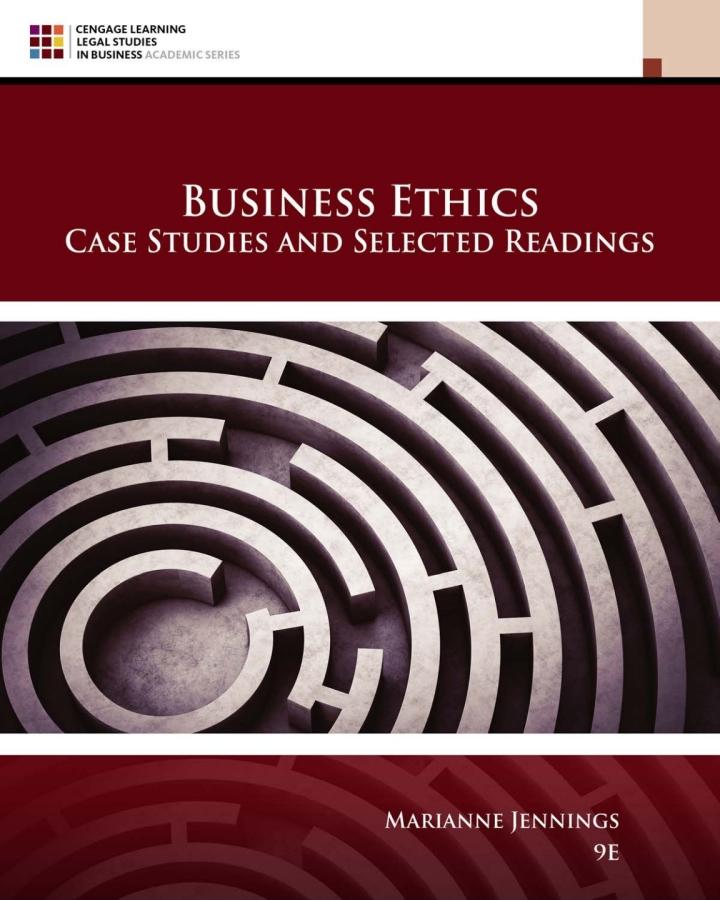Mattel, Inc., is the world's largest manufacturer and marketer of toys, dolls, games, and stuffed toys and
Question:
Mattel, Inc., is the world's largest manufacturer and marketer of toys, dolls, games, and stuffed toys and animals. Mattel employed Carter Bryant as a product designer from September 1995 through April 1998 and from January 1999 through October 2000. Upon starting his second term of employment in 1999, Bryant signed an Employee Confidential Information and Inventions Agreement, in which he agreed not to "engage in any employment or business other than for [Mattel], or invest or assist (in any manner) any business competitive with the business or future business plans of [Mattel]." Also, Bryant assigned to Mattel all rights, title, and interest in the "inventions" he conceived of, or reduced to practice, during his employment. Bryant also completed Mattel's Conflict of Interest Questionnaire and certified that he had not worked for any of Mattel's competitors in the prior 12 months and had not engaged in any business dealings creating a conflict of interest. Bryant agreed to notify Mattel of any future events raising a conflict of interest. \({ }^{51}\)
A July 18, 2003, Wall Street Journal article suggested Bryant had copied a scrapped Mattel project, known as "Toon Teens," in creating the Bratz. The story reported that MGA said that the Bratz were designed by Carter Bryant, a former member of Mattel's Barbie team. Bryant didn't work on the line that Mattel scrapped in 1998, but most Barbie design ers had seen the prototypes. Although the doll line that was scrapped wasn't exactly like the Bratz, they were remarkably similar, with the Bratz's oversized heads, their pursed lips, cartoonish eyes, and big feet, to the dolls the Barbie team had created. Lily Martinez, a designer who still works at Mattel, came up with the idea for the big doll heads and posted her sketch on her cubicle where anyone could see them. \({ }^{52}\) By 2003, MGA's revenues were about \(\$ 800\) million, with \(65 \%\) of that coming from the Bratz doll line. After investigating the situation reported in the Wall Street Journal, Mattel discovered in November 2003 that Bryant had secretly entered into an agreement with MGA Entertainment, Inc, a competitor, during the time that he was employed by Mattel, to receive royalties for "works for hire." In an agreement signed September 18, 2000, Bryant agreed to provide product design services for MGA's line of Bratz dolls in exchange for \(\$ 5,500\) per month for the first six months and \(\$ 5,000\) per month for the next three months, as well as a 3\% royalty on the Bratz he worked on. Mattel filed its copyright registration for the Toon Teens drawings on November 28, 2003, four years after the drawings were created. Bryant's last day of employment at Mattel was October 20,2000. Bryant went through the usual Mattel checkout. The checkout form used for Bryant misquoted Bryant's Inventions Agreement, which did not expressly assign to Mattel Bryant's interest in his ideas. This error may have resulted from the fact that prior versions of Mattel's Inventions Agreement expressly assigned the contracting employee's interest in his ideas. Bryant's agreement identifies "discoveries, improvements, processes, developments, designs, know-how, data computer programs and formulae, whether patentable or unpatentable," language that was not in prior versions. Mattel filed suit against Bryant for (1) breach of contract, (2) breach of fiduciary duty, (3) breach of duty of loyalty, (4) unjust enrichment, and (5) conversion. \({ }^{53} \mathrm{MGA}\) Entertainment intervened in that case. Mattel settled with Bryant but amended its complaint against MGA alleging intentional interference with contract; aiding and abetting breach of fiduciary duty, aiding and abetting breach of duty of loyalty, conversion, unfair competition, and copyright infringement. \({ }^{54}\) However, MGA counterclaimed against Mattel for appropriation of trade secrets. MGA's counterclaim arose out of the activities of Mattel's Market Intelligence Group, a collection of employees dispatched to international toy fairs and directed to gather information from the private showrooms of Mattel's competitors through the use of false pretenses. Allegations in the counterclaim stated that the employees had made copies of identification credentials in order to gain access to the private showrooms, showrooms that were intended for buyers to be able to see what was available for purchase from MGA in the future..........
Discussion Questions
1. One expert commented that the litigation "killed" the Bratz line and nearly destroyed MGA as a competitor. Were the competitors killing each other?
2. Should Mattel have done more to protect its trade secrets? Is an agreement with an employer necessary in order to keep you from taking trade secrets to your next employer?
Step by Step Answer:

Business Ethics Case Studies And Selected Readings
ISBN: 9780357453865
9th Edition
Authors: Marianne M. Jennings




